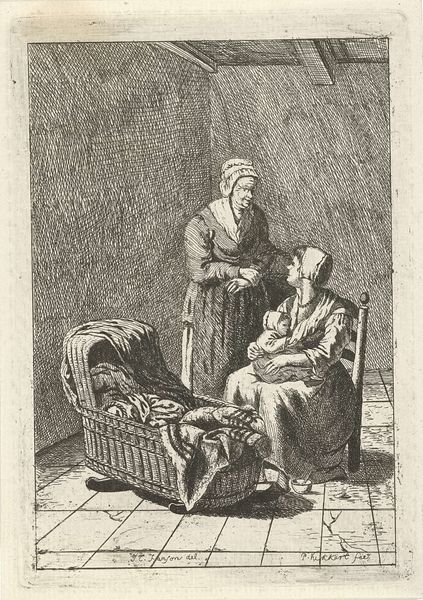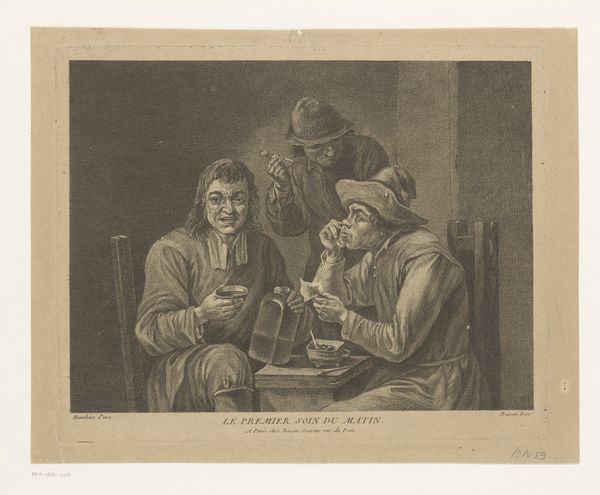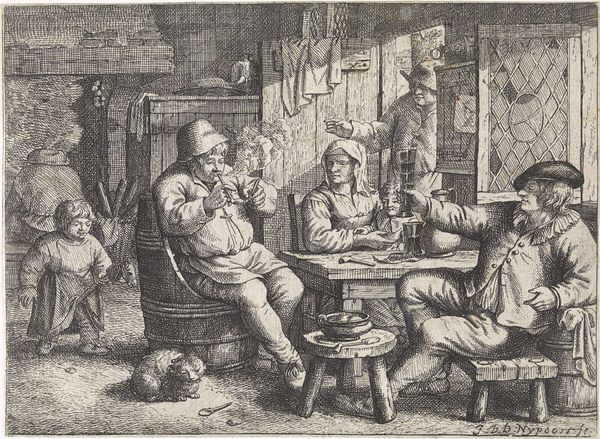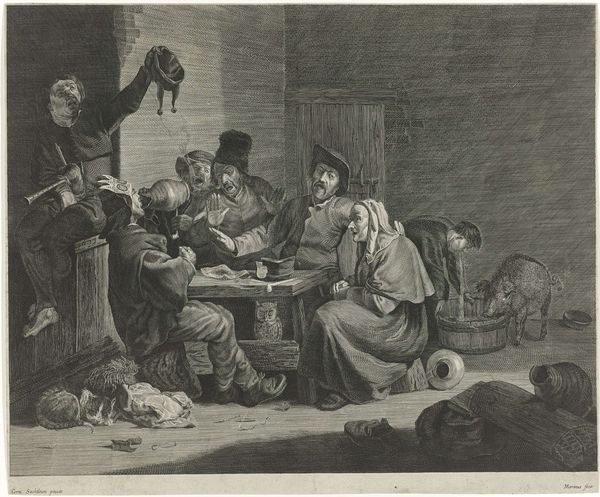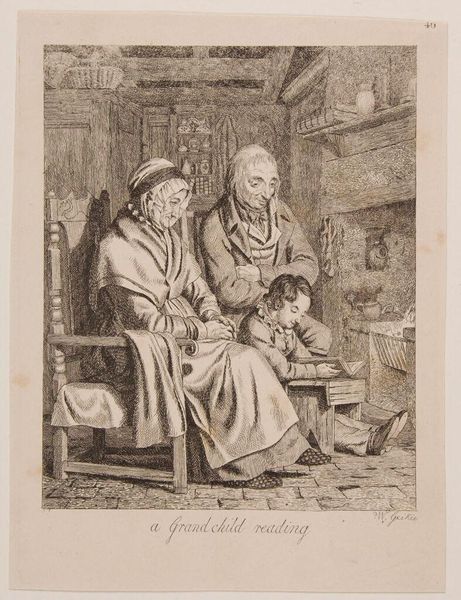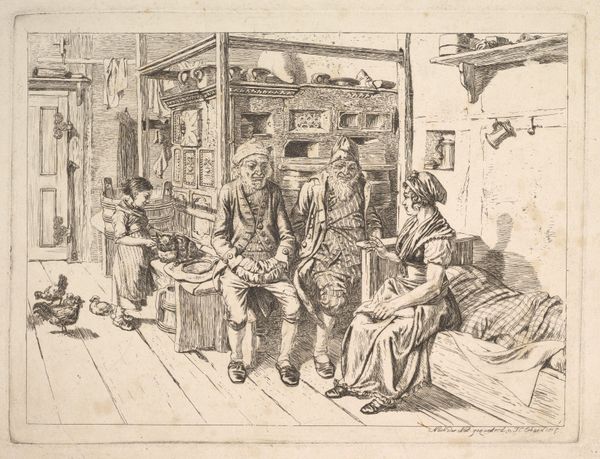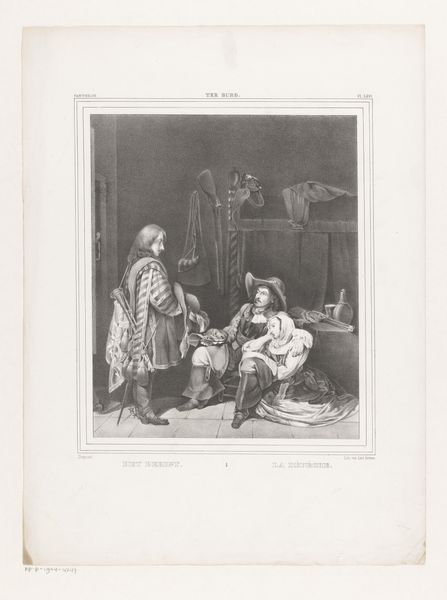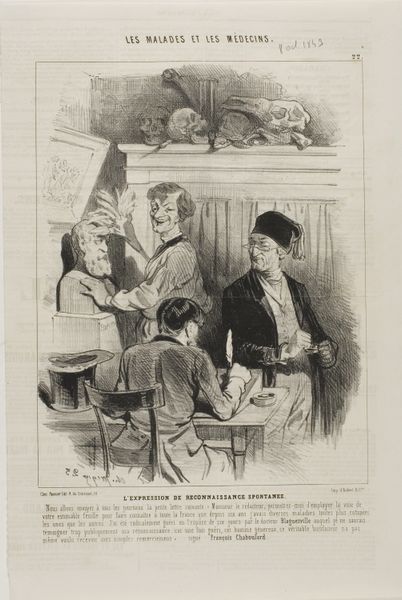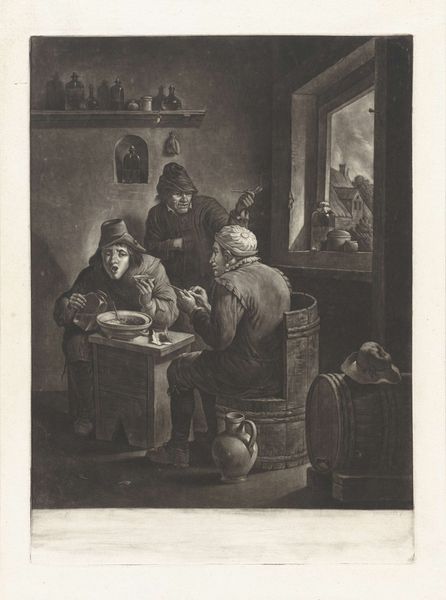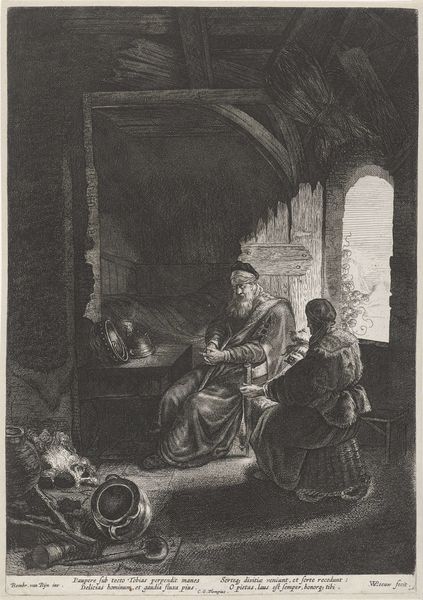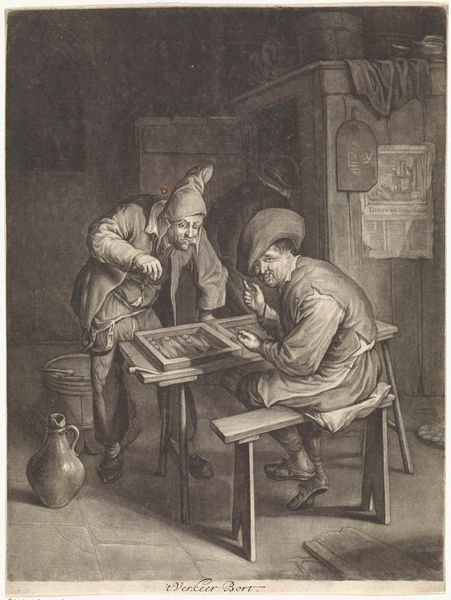
print, engraving
#
portrait
#
dutch-golden-age
# print
#
genre-painting
#
engraving
Dimensions: height 236 mm, width 278 mm
Copyright: Rijks Museum: Open Domain
Editor: This is "Echtpaar in een boeren interieur" or "Couple in a Farmer's Interior" by Izaak Jansz. de Wit, from 1794. It's an engraving. I'm struck by how stark the scene is; it seems to offer an unromantic glimpse into rural life. What do you see in this piece that perhaps I'm missing? Curator: The image presents a window into the lives of Paulus Vincent and Barbara Jansen, but more specifically, how they were being presented and perceived by the print's intended audience. It's not merely a glimpse into rural life but a performance of it. Consider the details included - the sparse interior, their plain clothing, the implements for everyday tasks. How do these elements contribute to a specific narrative about rural Dutch life in the late 18th century? Editor: I hadn't thought about it as a performance. So the artist is consciously crafting an image with a certain message? The almost caricature-like quality to their faces, does that amplify this message? Curator: Precisely! It appears so. This was produced at a time of significant social and political change, right after the Patriot Revolution, during which much older regime structures had come under fire. Popular imagery often became a tool to subtly, or not so subtly, express commentary. How might a print like this reflect or even reinforce ideas about the social order and rural identity during such a turbulent period? What would the target audience have gleaned? Editor: So, it's not just about what is depicted, but about who is doing the depicting and who it is *for*. The details like the poem at the bottom might have offered further contextual understanding. Thanks, it really reframes how I look at genre paintings. Curator: Absolutely. Thinking about the context, production and intended audience makes all the difference in understanding its cultural function. Analyzing this print reveals not just the subject, but the complex socio-political dynamics shaping its creation.
Comments
No comments
Be the first to comment and join the conversation on the ultimate creative platform.
